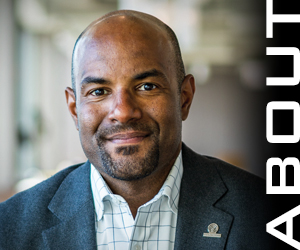CEO Outlook | Spring 2024
Turnover Comes at a Cost. Let’s Be Accountable
High turnover is an issue the accounting profession can’t afford to overlook.

Geoffrey Brown, CAE
President and CEO, Illinois CPA Society
Insights From Your President and CEO
For a profession that revolves around numbers, one number that doesn’t seem to get enough attention is the turnover rate. Turnover in the accounting profession has been a challenge for many years (and arguably decades), and the costs are mounting at a time when they can’t really be afforded.
Not only does high turnover in the profession make it difficult to retain talent, it also makes it hard to attract and hire new talent. When it comes to recruiting fresh faces to carry the profession forward, those who see the high turnover in the profession are becoming increasingly reluctant to join workplaces that see so many people depart. In turn, our research on the matter found that turnover negatively impacts the employees left behind. Compounding the challenges, workplace morale can also drop, and trust in leadership may be questioned, when large numbers of employees depart.
Our recently released Insight Special Feature, “Righting Retention,” focused on, you guessed it, righting retention. In our research, the leading reasons employees cited for voluntarily leaving their employers shouldn’t surprise anyone. Salaries, burnout, and lack of work-life balance, just to name a few, were major drivers of the profession’s human capital-related issues. While those issues have historically been seen as “public accounting” challenges, that’s no longer the case.
Every segment of the profession is, or soon will be, impacted by retention challenges. Collectively, I think we need to become more attuned to the needs of our people. I believe we should focus on our underlying organizational cultures and truly consider how all the issues identified in “Righting Retention” may be driving our talent to pursue other opportunities, both in and out of the profession.
Resolving the profession’s turnover troubles is going to take meaningful and purposeful stewarding of our human capital resources in a manner that’s responsive to employees’ needs and those of our individual organizations. Here are a few actions I think leaders can take to start addressing their retention issues now:
- Hire the right people and manage their expectations.
- Stay current with compensation and benefits.
- Communicate early and often.
- Articulate career pathways for every role.
- Ensure that your workplace policies are flexible and responsive.
As we look to the future, we must be ready to discuss our culture gaps and how we can implement concrete, actionable solutions to address them. People join this profession with hopes of being supported throughout their careers. Creating the conditions for talent to develop their professional skills and contribute to organizational success, now and in the future, will undoubtedly increase connectedness and help us retain our best and brightest over the long term.
I encourage you to always listen to your people and genuinely consider their perspectives. They know what they need more than anyone else. Be honest and responsive. Be transparent and approachable. Foster the right strategy, stewardship model, and culture. Do this and you’ll demonstrate that you value your people and their contributions.
With this kind of foundation in place, I’m confident we can address the profession’s turnover issues and become more prepared for the future. In the end, we can’t afford not to do all we can to position the profession as one worth joining and staying in.
Related Content: